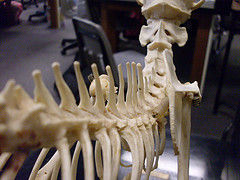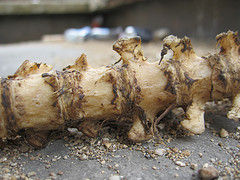
Over the last few months a multitude of clients have come my way with a diagnosis of Intervertebral Disk Disease (IVDD), in various stages of progression. I’m sure part of it has to do with my profession, as an animal chiropractor people naturally think of me when it comes to back problems. It makes sense they would be sent to me; unfortunately the majority of patients have come my way a bit too late. After the tenth or eleventh IVDD patient I decided it was necessary to learn more about this disease, specifically. As you may or may not know, chiropractic adjustments do not treat anything in particular besides structural shifts in the spine. These shifts can in turn cause a multitude of problems, IVDD being one of them.
Prognosis for these patients is ten times better when they are treated in a preventative manner, rather than playing catch up. I needed to know more, I needed to find a way to help sooner, I needed to answer the some questions. When does IVDD typically begin? What are the earliest symptoms? Who is usually affected? How can I help?
Who: According to the Veterinary Merck Manual, the Bible of vet med, IVDD is “degeneration and protrusion of the intervertebral disk resulting in compression of the spinal cord, spinal nerve, and/
or nerve root”. (1) The animals most affected by this disease are those with chondrodystrophy. And what might that be? Chondrodystrophy is a cartilage disorder in an animal, causing irregular cartilage formation. (2) Connective tissue is affected often leading to irregular bony structure. These dogs tend to look either squished or stretched, to put it simply, and often times have shortened limbs with angular deformities. This would include beagles, bassett hounds, dachshunds, bulldogs, pekingeses, and shih tzus. 
When: IVDD typically hits at two different life stages. For smaller dogs, the first stages of
degeneration can begin during puppyhood, with the disc starting to bulge and irritate the nerve root. An occasional limp may occur, though more often than not symptoms may not arise until later in life, and when they do they tend to come full force. For larger breed dogs, the type of disk disease is slightly different and the progression is a bit slower. Rottweillers tend to be affected often by fibroid disk disease. (1) What starts as a limp can progress into a dragging of the legs and eventually lead to paraplegia if the right steps aren’t taken.
Symptoms: The location of the disk protrusion will determine what kind of symptomatology presents itself. For example, lumbar disc disease shows up with back pain, hunching of the back (kyphosis), twitches in the legs, ataxia, and paraplegia. With cervical disc disease one can expect to find muscular spasm, neck pain, neck rigidity, and occasionally front limb lameness. Onset of these symptoms can be quite quick or they can build for several months. Often times our animals show us symptoms of pain or discomfort, and because they then mask those symptoms, we think everything is okay. If your animal is one of the breeds predisposed to IVDD it is imperative you get them evaluated if they show any symptoms, no matter what age. These things cannot be ignored because there is such a small window where recovery is possible. 
Prognosis: This is entirely dependent on the animal and the stage of IVDD. According to the Merck Manual, the most telling feature of IVDD is whether or not the animal maintains deep pain perception below the lesion. (1) If deep pain is present, there is a much greater recovery than if it is not. When an animal presents with paraplegia and lack of deep pain there is a small chance they could develop myelomalacia. Translated this means softening of the spinal cord. This syndrome is accompanied by paralysis of not only the forelimbs but also of the respiratory system.
My encounters thus far have been a mixed bag. I have seen the animal that develops myelomalacia and very quickly loses the ability to function. I have seen the animal that is paraplegic in the hind limb but functions perfectly with a set of wheels. I have seen the animal that had surgery within that small window of time and is recovering nicely. I have seen animals that have been treated for IVDD with alternative care, using cold laser therapy, acupuncture, and chiropractic, which have gone on to make near full recoveries. Ideally we could catch these cases much sooner in the disease. Prevention is much easier on all parties involved; it’s just a matter of knowing what to look for, and when you see it, knowing how to move forward.
Intervertebral Disk DiseaseFor further questions regarding IVDD and what alternative therapy can do for your animal, please feel free to contact us, we are happy to help in any way we can!
Sources:
1) The Merck Veterinary Manual. Intervertebral Disk Disease. Available at: http://www.merckvetmanual.com/mvm/nervous_system/diseases_of_the_spinal_column_and_cord/degenerative_diseases_of_the_spinal_column_and_cord.html. Accessed April 14, 2015.
2) Smolders LA, Bergknut N, Grinwis GC, Hagman R, Lagerstedt AS, Hazewinkel HA,
Tryfonidou MA, Meij BP. Intervertebral disc degeneration in the dog. Part 2:
chondrodystrophic and non-chondrodystrophic breeds. Vet J. 2013 Mar;195(3):292-9.

